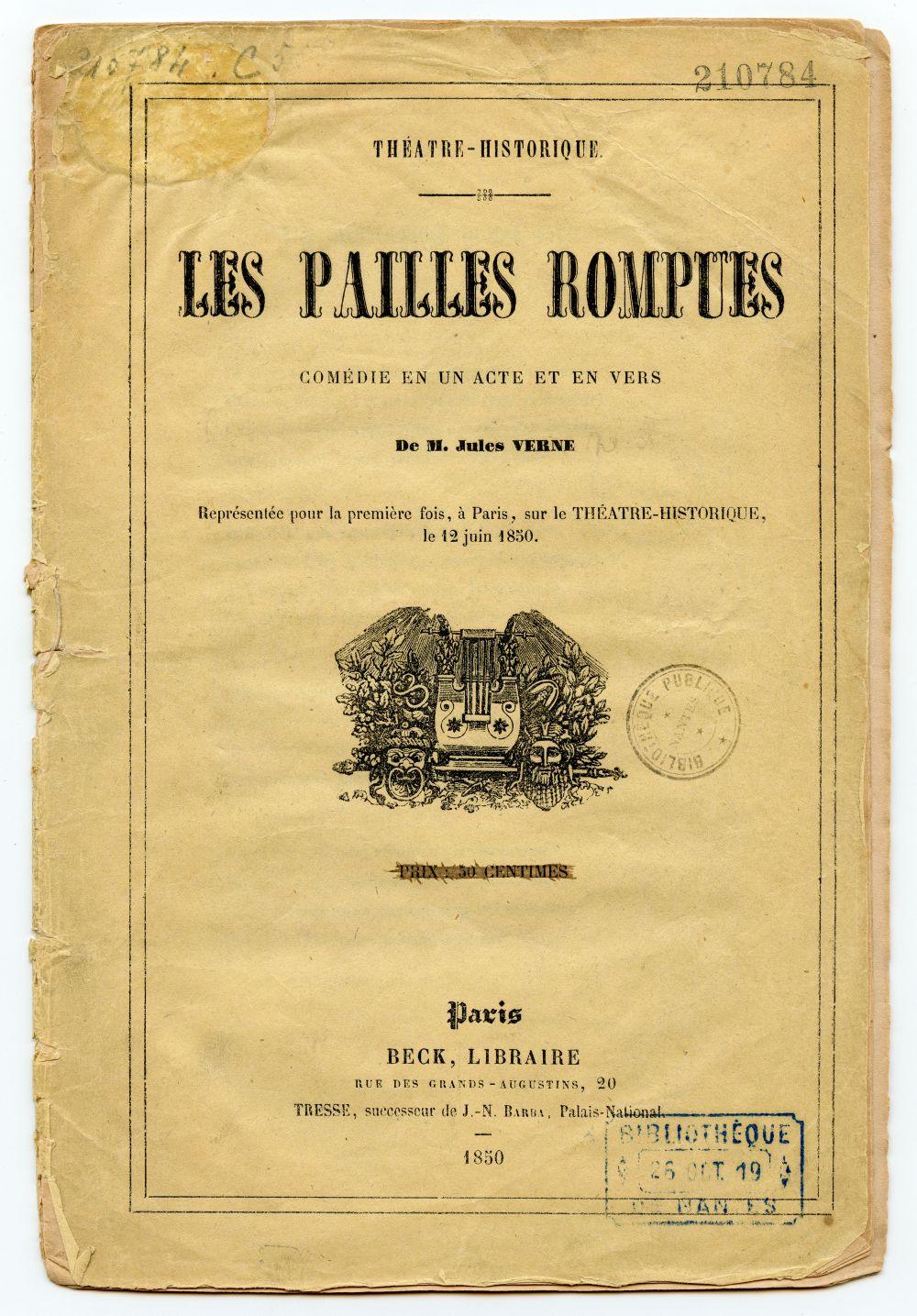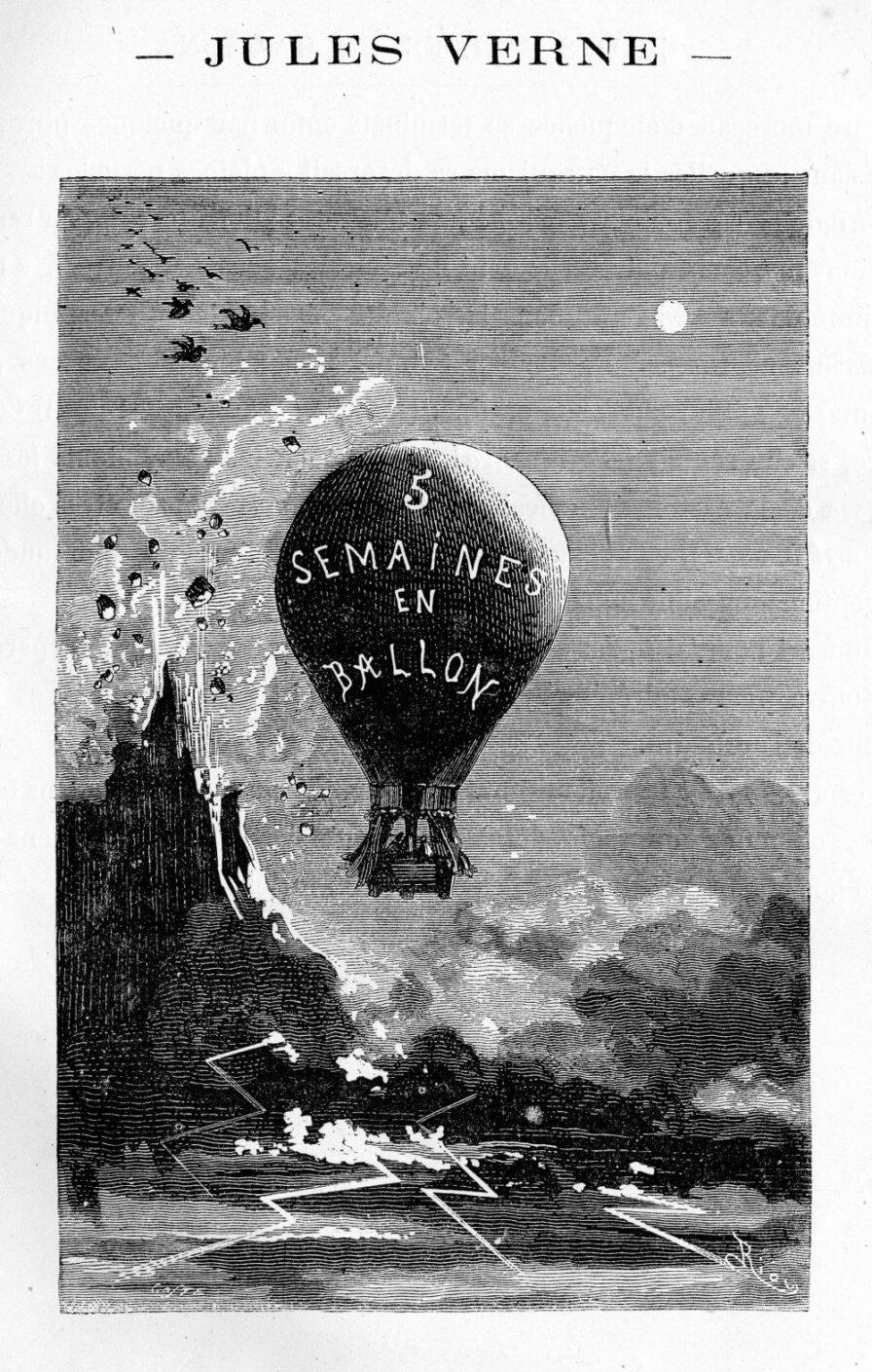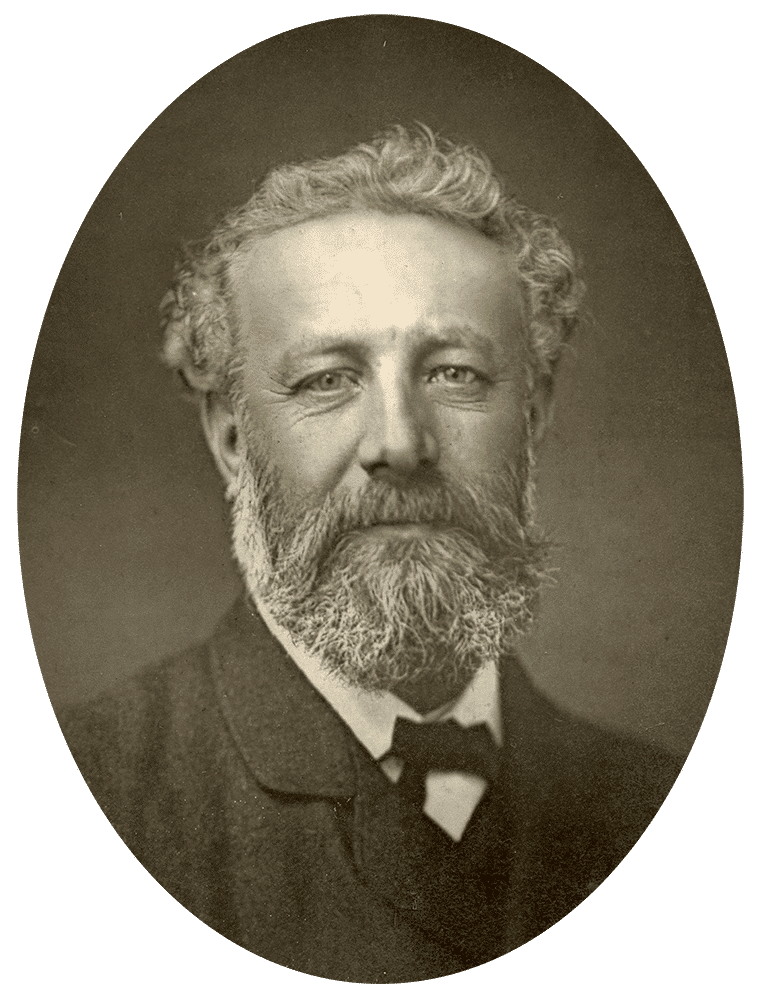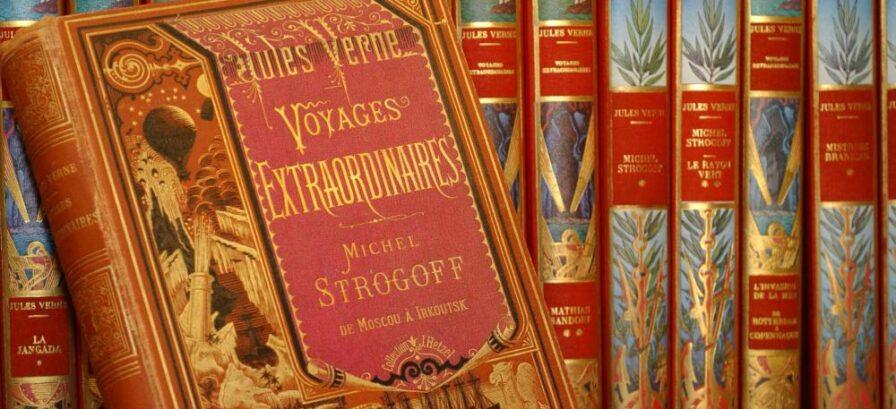Childhood in Nantes
The house where Jules Verne was born is in the heart of Nantes, on the Ile Feydeau (which was really an island at the time, squeezed between two arms of the Loire). He spent the first fourteen years of his life just a stone’s throw away, at 2 quai Jean-Bart. The building overlooks the confluence of the Loire and Erdre rivers.
When Jules was around ten years old, the family bought a country house in the village of Chantenay (now a district of Nantes). From this house, they could see the activity of the port spreading right into the heart of the city, leaving a deep impression on the young boy.
Although he did not see the sea for the first time until he was twelve, islands, harbours and ships had long been part of his life and his dreams.
I was born in Nantes, where I spent my entire childhood.
Jules Verne, Memories of childhood and youth, 1891
The Verne family liked to write poetry for special occasions: births and weddings were occasions to celebrate the joys of love and family in verse.
In his teens, he began to fill the two poetry notebooks that accompanied him throughout his life. Unpublished at the time of his death, they were not published until 1989. Lyrical or satirical poetry, love stories or the rhymes of a songwriter, the most diverse genres are found side by side. Later, he also worked as a lyricist, providing his friend, the composer Aristide Hignard, with poems to set to music. These songs were collected and published in 1857 under the title Rimes et mélodies.
From the age of twelve or fourteen, I always had a pencil with me and from the time I went to school, I never stopped writing, especially poetry.
Jules Verne
The Parisian years
In the early 1850s, Jules Verne ‘went up’ to Paris to complete his law studies. He did not yet know that he would be a novelist, but he did know that he would not be a lawyer. His father’s solicitor’s office waited in vain for him to take over.
He continued to write and published his first texts in the magazine Musée des familles, edited by his fellow Nantes native Pitre-Chevalier. He met Alexandre Dumas, thanks to whom he had his first play performed at the Théâtre-Lyrique (of which he later became secretary): Les pailles rompues. The play was also presented in Nantes at the Théâtre Graslin.
He relished the joys of Parisian life (insofar as his father’s modest pension and a few odd jobs enabled him to do so). The letters he sent to his parents bore witness to his daily life and the difficulties he faced: how could a young man contemplating a literary career attend salons with his shirts in tatters? How could he resist the temptation to buy (on credit) a piano or a collection of books in perfect condition?
At the same time, he met the geographer and traveller Jacques Arago, famous for his circumnavigation of the globe in 1817 aboard the Uranie. It was a decisive meeting for Jules Verne, a young man with a passion for maritime adventures and travel.

Hetzel and the Voyages extraordinaires

It was in 1861, through the novelist Alfred de Bréhat, that Jules Verne came into contact with the publisher Pierre-Jules Hetzel, who would publish his first novel two years later. The first print run of Five Weeks in a Balloon was 2,000 copies, but during the author’s lifetime it sold 76,000 (only Around the World in Eighty Days did better, with 108,000 copies).
In 1864, Jules Verne signed a contract with Hetzel under which he undertook to supply two volumes a year, rising to three by 1865. Within this publishing house, Jules Verne was also co-editor of Magasin d’éducation et de récréation, a periodical founded by Hetzel and Jean Macé with the aim of offering families ‘serious yet attractive teaching that would please parents and benefit children’.
When Hetzel died in 1886, his son took over and continued the publication of Voyages extraordinaires, which totalled 62 novels and 18 short stories.
Jules Verne, who considered himself first and foremost a playwright, had the opportunity to breathe new life into his Voyages extraordinaires by adapting some of his novels for the stage. Around the World in Eighty Days, Michel Strogoff and In Search of the Castaways were stage productions that filled the Châtelet and Porte Saint-Martin theatres every evening for months on end.
The traveller
As soon as his first income allowed him to do so, he bought his first boat, the Saint-Michel. Two more were to follow, with which he set out to travel the seas of Europe. With the Saint Michel III, he made several long cruises in the Mediterranean between 1878 and 1885, which were all sources of inspiration.
A Floating City is the fictionalised account of his Atlantic crossing aboard the Great-Eastern, the largest ocean liner in the world.

Amiens
After Nantes, where he spent his first twenty years, and Paris, where he lived for twenty-three years, Jules Verne moved to Amiens in 1871. The home town of his wife Honorine de Viane, whom he had married in 1857, welcomed the couple and their son Michel, as well as the two daughters from Honorine’s first marriage.
In Amiens, Jules Verne led the life of a well-ordered bourgeois, entertaining society to please his wife, but preferring the industrious solitude of his study to the mundanities of the salon. As the crowning achievement of his notable life, he was elected town councillor in 1888. He was in charge of the theatre, which he frequented assiduously; he gave speeches at the lycée prize-giving ceremony and inaugurated the circus in 1889.
Jules Verne died in Amiens on 24 March 1905.
Jules Verne as a child, sculpture by Elisabeth Cibot, 2005, on the Jean Bruneau esplanade in the immediate vicinity of the Jules Verne Museum..


